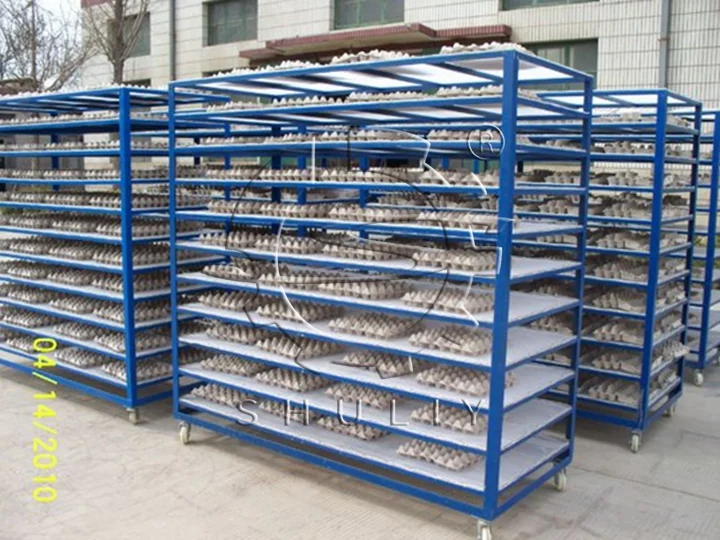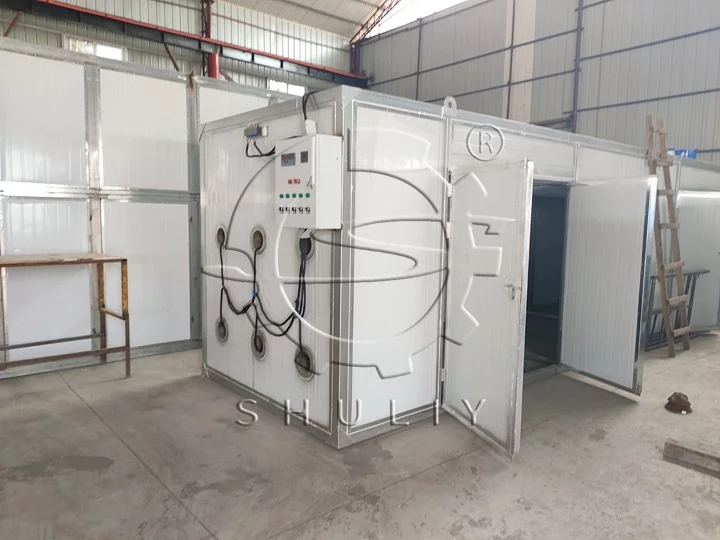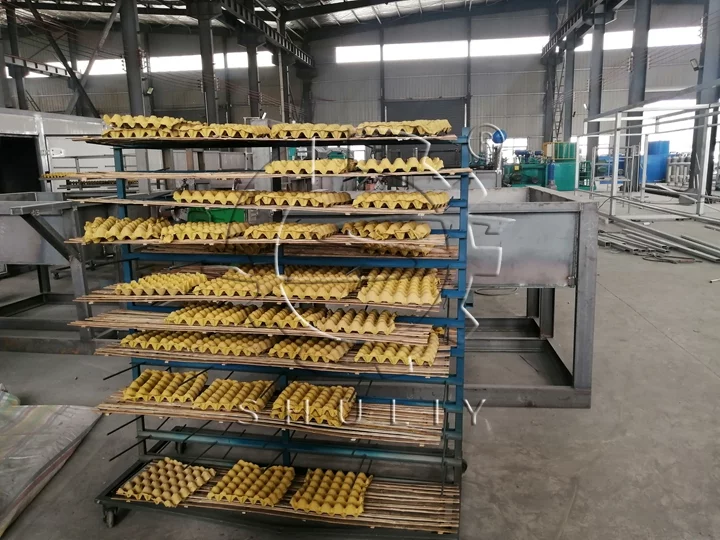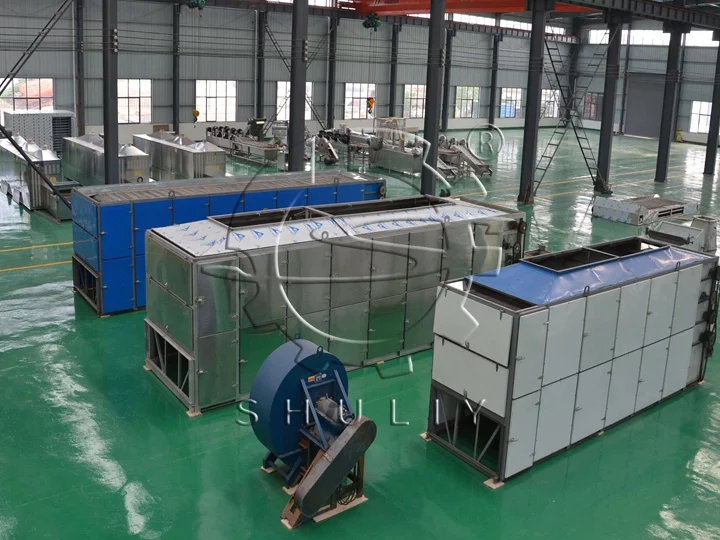The drying process is a crucial step in the production of egg trays, ensuring they achieve the required strength and durability. There are several drying methods employed in the industry, each with its own set of advantages and disadvantages.
1. Sun Drying:
Sun drying involves placing molded egg trays on trays (made of bamboo or galvanized metal) and placing them on drying racks. This setup is then moved to an open area, allowing the trays to dry through exposure to sunlight and natural airflow. While this method doesn’t require energy, it demands more manpower and takes up significant space.
- Advantages: No energy requirement, reducing production costs.
- Disadvantages: More labor-intensive, requires significant space, weather-dependent.

2. Drying Chambers:
In drying chambers, molded trays are placed on galvanized trays and moved into drying chambers. After half an hour of baking, the trays are dried. The chambers can hold 10-12 carts, each carrying 90-100 trays. This method ensures consistent production in various weather conditions, but it requires more labor.
- Advantages: Production continues in windy or rainy weather, occupies less space.
- Disadvantages: Requires larger manpower input.


3. Brick Drying:
For brick drying, trays pass through a drying tunnel for 15 minutes at temperatures of 180-200 degrees. The drying length is typically 40-70 meters, and various fuels like coal, wood, natural gas, or diesel can be used. While construction costs are lower, it has a larger footprint and higher drying expenses.
- Advantages: Lower construction costs for multi-layer drying, potential for automation.
- Disadvantages: Large footprint, higher drying costs.

4. Multi-Layer Drying:
In multi-layer drying, trays are conveyed through a drying chamber with six layers. After 25 minutes of drying at 180-200 degrees, trays exit from the lower end. The chamber, measuring 18 meters in length and six layers in height, offers a small footprint, efficient energy consumption, and high automation. However, the initial investment is higher.
- Advantages: Small footprint, efficient energy consumption, high level of automation.
- Disadvantages: Initial investment is relatively higher.

Conclusion
In conclusion, the choice of drying method depends on factors such as cost considerations, available space, and the desired level of automation. Each method comes with its own trade-offs, and we will carefully evaluate our customer’s specific needs and constraints to determine the most suitable drying approach for their egg tray production.


